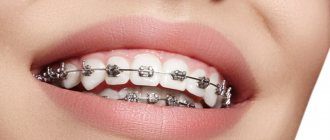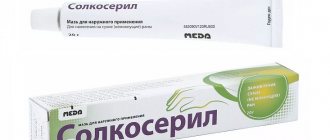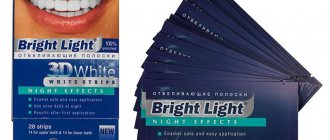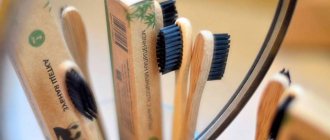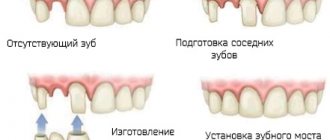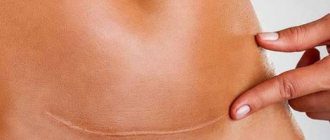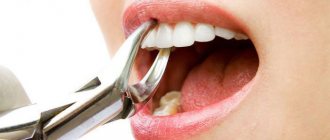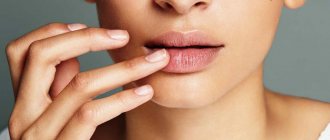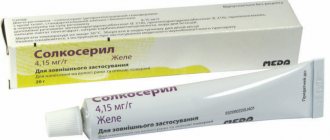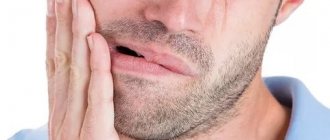Skin damage, whether it be wounds or burns, is something that should not be left to chance. Today we will talk about wound healing ointments. What to use if the wound is festering, what kind of wound-healing ointments with silver are there, how to care for wounds with diabetes? About all this and much more in our material.
Dmitry Gonchar May 10, 20215 min read 8437
Any product for regeneration (restoration) of damaged skin is selected taking into account the degree of damage. And of course, an ointment that does an excellent job on a cut or scratch may be significantly “weaker” in composition than an ointment for healing deep purulent wounds, trophic ulcers, burns, etc.
But the basic rule with which to start a conversation about wound-healing ointments is this: every wound, regardless of its origin and the degree of tissue damage, goes through three “life stages”:
- Inflammatory phase.
- Regeneration (recovery) phase.
- Epithelization phase.
This is what you need to proceed from when choosing a cream, gel or ointment for wound healing - although, of course, it is better to entrust this mission to a doctor. After all, sometimes at the first stage one drug will be most effective, but for the recovery period - another, and sometimes you can get by with the same drug throughout the entire wound healing process. Therefore, in order for treatment to be as fast as possible and not put too much of a cost on your pocket, you should first consult with a specialist.
In the meantime, let's look at the best (or rather, the most popular due to their effectiveness) ointments, creams and gels for wound healing, sold in pharmacies without a prescription.
Main manifestations of wounds
Pain
In this case, pain occurs due to damage to the nerve endings that were located at the site of the injury. Over time, swelling may increase, which also leads to increased pain. The severity and degree of manifestation of pain depends on factors such as:
- location of the defect, concomitant damage to large nerve trunks;
- type of weapon or conditions of damage (asphalt, garden, bicycle, sharp object, etc.);
- psychological state of the child.
In essence, pain is an adaptive defense reaction of the body.
Bleeding
Any damage to the skin or mucous membranes is in one way or another accompanied by damage to blood vessels (capillaries, arteries, veins). The nature and degree of bleeding depends on the type of damaged vessel. The larger the vessel and the higher the pressure in it, the more massive the bleeding, and vice versa. It is worth highlighting those places on the body that are accompanied by more heavy bleeding: face, head, neck, hands . In these places, the tissues are better supplied with blood. The condition of the blood coagulation system plays an important role. If a child has a minor abrasion or scratch, which is accompanied by prolonged and heavy bleeding, then it is necessary to consult a pediatrician and pediatric hematologist in order to exclude a disease of the blood coagulation system. This may also be indicated by the appearance of a large number of bruises for no reason.
If a small abrasion is accompanied by prolonged and heavy bleeding, then it is necessary to consult a hematologist.
Hiatus
This phenomenon is associated with a reduction in the elastic fibers of the skin. As a result, the skin edges of the lesion diverge. Many surgeons know what Langer's lines are. They indicate the course and direction of the fibrous structures of the skin. For this purpose, incisions are made along these lines, which leads to rapid healing of the incisions and reduction of gaping. Accordingly, when a defect appears perpendicular to these lines, a wide divergence of the edges of the defect develops.
Basics of treatment with drugs that promote wound healing
Drugs that promote wound healing belong to the group of over-the-counter drugs, that is, they are dispensed from pharmacies without a doctor’s prescription. The task of a pharmacist or pharmacist in a pharmacy is to help the patient choose the most suitable drug from a wide range of wound-healing drugs.
Preparations that promote wound healing are used topically - applied in a thin layer to previously cleansed damaged areas of the skin 1-2 times a day, preferably at regular intervals.
The duration of use of wound healing drugs depends on the degree of skin damage and can range from several days to several weeks.
Types of wounds
They can be:
- Operating: applied deliberately for the purpose of performing an operation.
- Accidental: as a rule, these are household damages.
Depending on the nature and conditions of the damage, wounds are distinguished:
- chopped;
- I stab;
- bruised;
- torn;
- crushed;
- chopped;
- bitten;
- mixed;
- firearms.
In children , cut, puncture, bitten, mixed, and also superficial (abrasions, scratches, etc.) predominate. Particular attention is paid to bites that result from an animal or human bite (for example, another child), as they are the most infected. This is due to the large number of harmful bacteria in the oral cavity. They are most often complicated by infection.
According to the degree of infection there are:
- Freshly infected. As a rule, this damage occurs within 3 days from the date of its application. Defects with soil contamination are especially infected.
- Purulent. An infectious process develops in these lesions. Microbes, when multiplying, lead to increased inflammation, necrosis, and also contribute to the appearance of pus. Children with purulent manifestations develop symptoms of general intoxication: nausea, headache, dizziness, weakness, lethargy.
Wound healing and factors influencing this process
The wound healing process can be disrupted by many factors.
Healing is the process of repairing damaged tissue and restoring its integrity. During the healing process, certain processes occur. We will not dwell on them in more detail, but will only indicate those factors that may disrupt the healing process:
- Age. As a rule, this applies more to older people. The child's body has great regenerative capabilities. This is due to the high level of anabolic (construction) processes in the body.
- Attachment of infection.
- Decreased immunity.
- Poor circulation in the wound area.
- Chronic diseases (diseases of the respiratory and cardiovascular systems, diabetes, tumors and others).
Healing complications
- Attachment of infection . Most often, a nonspecific purulent infection develops. The threat is tetanus, rabies, diphtheria. Therefore, injuries that have been bitten and contaminated with soil or old metal objects should be immediately examined by a surgeon with a number of preventive measures taken (administration of anti-tetanus serum, rabies vaccine).
- Bleeding.
- Divergence of defect edges.
- In some cases, healing may be complicated by a hypertrophic scar or keloid . They are an abnormal scar that can spread beyond the defect area and also contribute to the development of complications.
Classification of drugs that promote wound healing
Drugs that promote wound healing include:
- vitamin preparations: dexpanthenol;
- hyaluronic acid preparations: zinc hyaluronate;
- herbal preparations: sage, calendula, larkspur, gray alder, sticky alder, Japanese sophora, cinquefoil, yarrow;
- preparations of animal origin: deproteinized hemoderivative from the blood of dairy calves, propolis;
- other wound-healing drugs: methyluracil, thiotriazoline.
In addition, there are combination products that contain wound-healing drugs along with antibiotics and antiseptics that are used for infected wounds: methyluracil + chloramphenicol; dexpanthenol + chlorhexidine; methyluracil + miramistin.
Products for treating wounds in children
Below we list the most popular and affordable means for treating superficial wounds in children:
- Iodine. Suitable for superficial abrasions, but not for deeper injuries.
- Diamond green.
- Hydrogen peroxide. It is the drug of choice for first aid in the treatment of superficial abrasions in children. Allows you to clean abrasions and scratches well. An equally important property is stopping bleeding.
- Furacilin. To prepare a solution for topical use, dissolve the tablet in water.
- Miramistin. It is also an antiseptic for topical use. Allows you to prevent suppuration. If a purulent process occurs, it allows you to fight it. A pleasant bonus will be the possibility of using this remedy for acute respiratory viral infections, sore throats and pharyngitis in children.
- Chlorhexidine.
An antiseptic helps prevent suppuration.
To speed up healing, ointments and creams can be used such as:
- Levomekol;
- Betadine;
- Vishnevsky ointment;
- cream Bepanten plus.
Ointments for wound healing after surgery
In principle, after surgery, the doctor may prescribe one or more of the ointments listed above. But there is also a separate group of drugs, which often include silicone, which serves to reduce itching in a postoperative wound. In addition, with long-term use, these products allow (or at least try to allow :)) to avoid scars after surgery, reducing the size and severity of future scars.
- Dermatix is an expensive but effective drug, widely used including in plastic surgery. It fights scars well, moisturizes damaged skin, and stimulates microcirculation. Suitable for use by pregnant and lactating women. IMPORTANT! Although Dermatix works well for cosmetic post-surgical defects, it does not have an anti-inflammatory effect.
Gel Dermatix Ultra, 15 g
Hanson Medical (USA)
Available in 73 pharmacies
814 UAH
Order
- Contractubex is another well-known drug with heparin, allantoin and onion extract. Relieves inflammation, improves microcirculation, inhibits the growth of connective tissue (the scar itself). IMPORTANT! Contractubex works best on fresh postoperative scars, immediately after removal of sutures, but it cannot handle old scars.
Contractubex gel tube 20 g
Merz Pharma (Germany)
Available in 387 pharmacies
360 UAH
Order
First aid for a child for superficial wounds
When such a situation arises, parents ask themselves: “How to treat the wound? How to properly treat a wound? What is the best remedy for treating a wound?
Before helping a child, parents need to wash their hands with soap and use an antiseptic. Next, in this sequence, you need to follow a number of instructions and actions:
- Assess the extent and nature of the damage. It is very important to understand whether the baby has a deep or superficial wound.
- Rinse and stop bleeding. Hydrogen peroxide is best suited for this purpose. You can also use a solution of furatsilin and chlorhexidine.
- Next, you can treat the skin with a drying antiseptic, for example, iodine solution or brilliant green.
- Apply an aseptic (clean) dressing.
- In the future, it is important to change the dressings regularly. It is also possible to use ointments and creams discussed earlier, which will speed up the healing process.
In case of deeper defects, heavy bleeding, wounds that have been bitten and contaminated with soil or old metal, you must urgently contact a surgeon.
Wounds are quite common, especially in young children. The task of parents is to provide timely assistance to the child in order to prevent infection. You must have a minimum first aid kit in your first aid kit. Do not self-medicate and, if threatening injuries occur, consult a doctor.
Modern drugs for the treatment of ulcers
Peptic ulcer of the stomach and duodenum still remains one of the most common gastrointestinal problems. In recent years, approaches to the treatment of ulcers have gradually changed due to outstanding achievements in microbiology, physiology and anatomy.
What is an ulcer
The morphological substrate - an ulcer - is a defect in the mucous membrane, which is formed under the aggressive influence of gastric contents against the background of a reduced ability of the mucous membrane to restore and protect itself. All areas of therapy come down to eliminating these factors of aggression and increasing the protective properties of the mucosa.
Proton pump inhibitors and their effects
In the treatment of ulcers, the problem of high acidity comes first, and ways to solve this problem were developed decades ago, after the discovery in 1973 of a special protein “pump” - a proton pump that supplies hydrogen protons for the formation of hydrochloric acid in the stomach.
